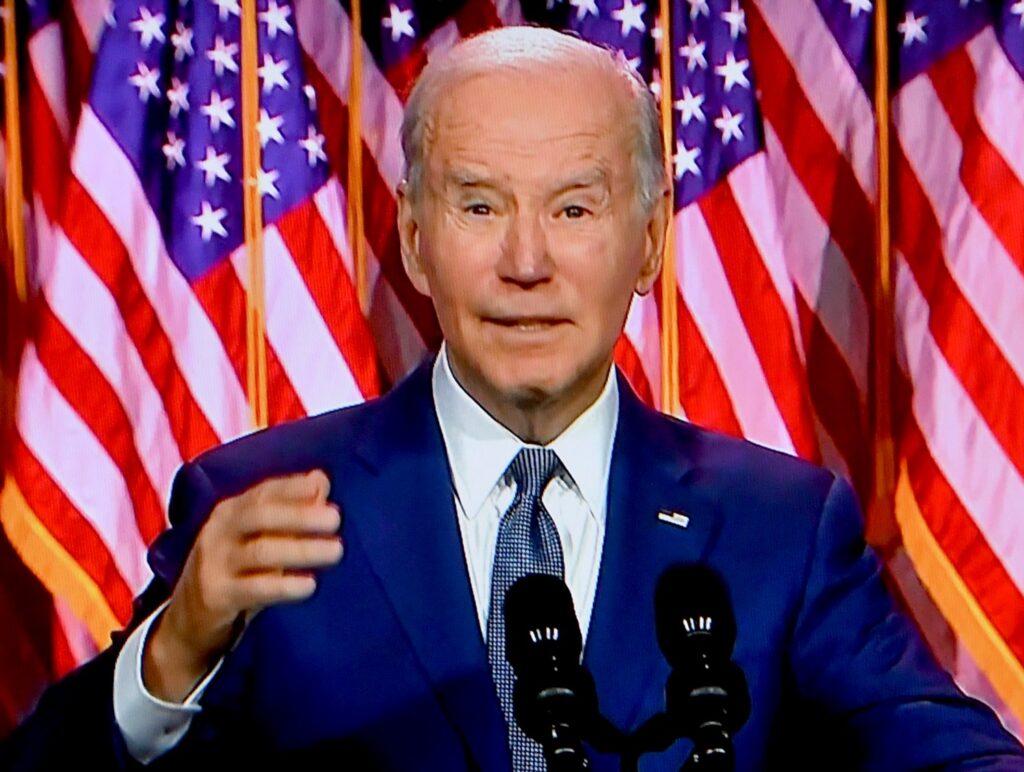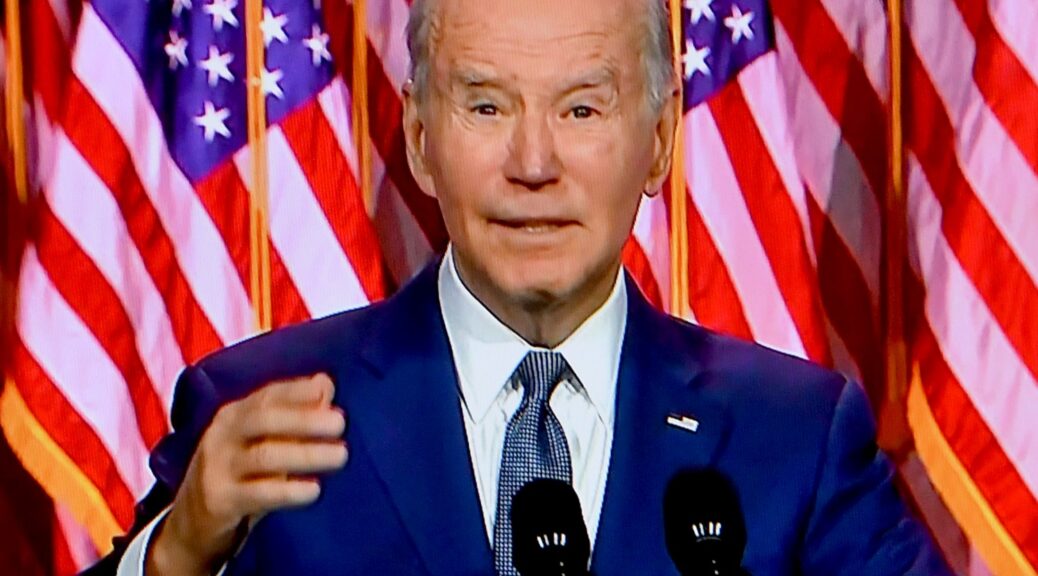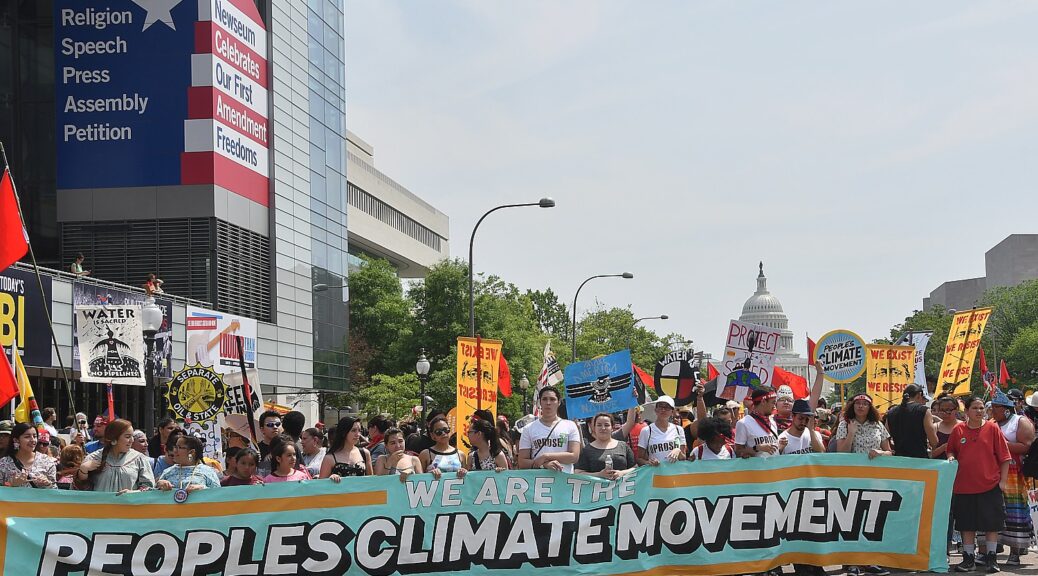Companies have announced $166 billion in investments in semiconductors and electronics in the one year since President Biden signed CHIPS into law

One year ago, President Biden signed into law the CHIPS and Science Act (CHIPS), which makes a nearly $53 billion investment in U.S. semiconductor manufacturing, research and development, and workforce. The law also creates a 25 percent tax credit for capital investments in semiconductor manufacturing, and is helping to keep America at the forefront of innovation and technological development. Semiconductors were invented in the United States, but today we produce only about 10 percent of global supply—and none of the most advanced chips. Similarly, investments in research and development have fallen to less than 1 percent of GDP from 2 percent in the mid-1960s at the peak of the space race. The CHIPS and Science Act aims to change this by driving American competitiveness, making American supply chains more resilient, and supporting our national security and access to key technologies.
In the one year since CHIPS was signed into law, companies have announced over $166 billion in manufacturing in semiconductors and electronics, and at least 50 community colleges in 19 states have announced new or expanded programming to help American workers access good-paying jobs in the semiconductor industry. In total, since the beginning of the Biden-Harris Administration, companies have announced over $231 billion in commitments in semiconductor and electronics investments in the United States. This week alone, the Department of Commerce announced the first round of grants under CHIPS to support the development of open and interoperable wireless networks, and the National Science Foundation and Departments of Energy, Commerce, and Defense announced progress toward establishing the National Semiconductor Technology Center, which will help advance America’s leadership in semiconductor research and development.
“One year ago today, I signed into law the bipartisan CHIPS and Science Act to revitalize American leadership in semiconductors, strengthen our supply chains, protect our national security, and advance American competitiveness,” President Biden stated. “America invented semiconductors – and today, they power everything from cell phones to cars to refrigerators. But over time, the United States went from producing nearly 40% of the world’s chips to just over 10%, making our economy vulnerable to global supply chain disruptions.
“The CHIPS and Science Act aims to change that.
“In the year since I signed this legislation into law, companies have announced over $166 billion to bring semiconductor manufacturing back to the United States. These investments are creating jobs and opportunities in communities across the country – from Ohio to Arizona, Texas and New York. And, in the last year alone, at least 50 community colleges have announced new or expanded programs to help American workers access good-paying jobs in the semiconductor industry.
“The CHIPS and Science Act is a key part of my Bidenomics agenda to bring investment and opportunity to every corner of the country. Over the coming months, my Administration will continue to implement this historic law, make sure American union workers, small businesses, and families benefit from investments spurred by the CHIPS and Science Act, and make America once again a leader in semiconductor manufacturing and less dependent on other countries for our electronics or clean energy supply chains.”
One Year of Progress on Semiconductor Manufacturing and Innovation
Over the past year, agencies across the federal government have been developing and executing on programs established under CHIPS to encourage domestic semiconductor manufacturing, invest in research and development, and support supply chain resilience and workforce development. Key milestones in the Administration’s implementation of CHIPS include:
Supporting U.S. Semiconductor Manufacturing
- The Department of Commerce launched the first funding opportunity for the $39 billion in semiconductor manufacturing incentives provided in the Act just six months after CHIPS was passed. This funding opportunity covers funding for projects to construct, expand, or modernize facilities producing semiconductors and for projects that are making large investments in facilities to produce semiconductor materials and manufacturing equipment. As the Department assesses applications, economic and national security considerations will be key factors and the program will, among other objectives, aim to provide a supply of secure, national-security relevant semiconductors.
- Already, the Department of Commerce has received more than 460 statements of interest from companies for projects across 42 states interested in receiving CHIPS funding to invest across the semiconductor value chain from manufacturing to supply chains to commercial R&D.
- The Department of Commerce has also stood up CHIPS for America, a team of more than 140 people working to support implementation of all aspects of the CHIPS incentives program.
- The Department of the Treasury released a proposed rule in March 2023 to provide guidance on the Advanced Manufacturing Investment Credit, a 25% investment tax credit for companies engaged in semiconductor manufacturing and producing semiconductor manufacturing equipment. The Department of the Treasury also released a proposed rule in June 2023 to allow companies to receive the full amount of the Advanced Manufacturing Investment Credit as a direct payment from the Internal Revenue Service.
- The Department of the Treasury released a proposed rule in March 2023 to provide guidance on implementing the Advanced Manufacturing Investment Credit to assist companies engaged in semiconductor manufacturing and producing semiconductor manufacturing equipment with a 25% tax credit.
Protecting National Security and Working with Allies and Partners
The Department of Commerce issued a proposed rule in March 2023 to implement the national security guardrails laid out in CHIPS. These guardrails are intended to prevent technology and innovation funded by the program from being misused by foreign countries of concern. The Department of the Treasury’s proposed rule in March 2023 implemented parallel guardrails for the Advanced Manufacturing Investment Credit.
- The Department of State announced in March 2023 its plans for implementing the International Technology Security and Innovation Fund to support semiconductor supply chain security and diversification, as well as adoption of trustworthy and secure telecommunications networks. The State Department has already announced partnerships with Costa Rica, Panama, and the OECD to explore opportunities to collaborate on the global semiconductor supply chain.
- The Department of Defense and Department of Commerce signed an agreement to expand their collaboration to make sure that CHIPS investments will position the United States to manufacture semiconductors essential to national security and defense programs.
- As it implements CHIPS, the Department of Commerce has been in close touch with a number of partners and allies including the Republic of Korea, Japan, the United Kingdom, India, and the European Union. The United States is engaging with partners and allies to coordinate government incentive programs, build resilient cross-border semiconductor supply chains, promote knowledge exchange and collaboration in developing next-generation technologies, and implement safeguards to protect national security.
Creating Jobs and Workforce Pipelines for American Workers
- The White House announced an initial set of five Workforce Hubs to create pipelines for Americans to access good-paying jobs in the semiconductor industry and other industries seeing an increase in investments driven by President Biden’s Investing in America agenda – including CHIPS, the Inflation Reduction Act, and the Bipartisan Infrastructure Law. The White House also announced a national Workforce Sprint focused on creating pipelines into advanced manufacturing jobs, including in the semiconductor industry.
- At least 50 community colleges have already announced new or expanded semiconductor workforce programs. In July, the White House launched its first Workforce Hub in Columbus, Ohio, where Columbus State Community College announced a new partnership with Intel which will create a new semiconductor technician credentialing course, available this fall.
- The National Science Foundation is investing in the American semiconductor workforce through new initiatives focused on the manufacturing workforce, supporting researchers, and curriculum development. This includes partnerships with major semiconductor and technology companies.
- According to Handshake, student applications to full-time jobs posted by semiconductor companies were up 79% in 2022-2023, compared to just 19% for other industries.
Investing in Innovation
- The Department of Commerce is partnering with the Department of Defense, the Department of Energy, and the National Science Foundation to establish the National Semiconductor Technology Center (NSTC), a critical part of the CHIPS research and development program that will support U.S. leadership in semiconductor innovation, cut down on the time and cost of commercializing new technologies, and develop the semiconductor workforce. The Department of Commerce has also outlined its strategy for the NSTC with respect to extending U.S. leadership in semiconductor innovation, reducing time to commercialization, and building a strong microelectronics workforce.
- The Department of Commerce is also continuing to work on other parts of its $11 billion R&D funding including the metrology program, the National Advanced Packaging Manufacturing Program, and up to three new Manufacturing USA Institutes.
- The Department of Defense released a Request for Solutions for its Microelectronics Commons R&D program in December 2022. This program will support hardware prototyping, the transition of new technologies from lab-to-fab, and workforce training. Source selection is currently underway.
Supporting Regional Economic Development and Innovation
- The Department of Commerce released a funding opportunity in May 2023 for Phase 1 of the $500 million Tech Hubs Program. This is an economic development program to develop centers of innovation across the country through support of regional manufacturing, commercialization, and deployment of key technologies.
- The Department of Commerce released a funding opportunity in June 2023 for Phase 1 of the $200 million Recompete Pilot Program, an initiative to support economic opportunity and create good jobs in persistently distressed communities.
- The National Science Foundation established a new Directorate for Technology, Innovation, and Partnerships. This Directorate has already launched the NSF Regional Innovation Engines program, which is helping to support innovation in geographies that have not received the full benefits of technology advancement in past decades. In May 2023, NSF announced 44 NSF Engines Development Awards spanning 46 U.S. states and territories, each funded at up to $1 million over two years to plan for a future NSF Engine. In August 2023, NSF announced 16 finalists for the inaugural set of NSF Engines awards, which are anticipated by the end of the year and will provide each NSF Engine with up to $160 million over up to 10 years.
Support Wireless Innovation and Security
- This week, the Department of Commerce announced its first round of grants from its $1.5 billion Public Wireless Supply Chain Innovation Fund to support the development of open and interoperable wireless networks.













